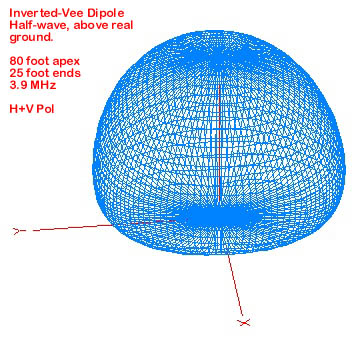I'm afraid that inverted 'V' is still a horizontally polarized antenna until it's stood on end, it won't have any vertical polarization at all. And there's not '6 dB' difference between a 1/2 wave and a 5/8 wave antenna. There's something difference between a 1/2 wave and 5/8 wave in the 5/8 wave's favor, but only something around 1 or 2 dB. There can be something like 6 dB difference seen on an 'S' meter, but that's because of polarization, not 'gain'.
A dipole's polarization depends on it's orientation/positioning in relation to 'ground', or the dirt under it. 'Bending' it into a 'V' shape does certainly change it's impedance and the shape of it's radiation pattern characteristics, but not in relation to polarization. Height above ground/dirt also doesn't affect polarization, but can have a considerable affect on any antenna's impedance and radiation pattern.
It isn't always easy to keep the distinction between polarization and other characteristics separated and is easily misunderstood. The easiest way of changing polarization is by the antenna's orientation with earth, tilt the thing over 90 degrees. That tends to work with any type of antenna.
That first sentence, "so lets say all things being equal.", is the 'sticking point'. Typically 'things' aren't going to be 'equal', sort of. A horizontally polarized antenna can have beneficial performance when mixed with vertically polarized antennas at a distance (DX). But that's not always a fact, and deals with the changes possible when a signal 'skips', or 'bounces' because of propagation. That polarization change isn't a predetermined fact, it always depends on the state of propagation, how the signal 'bounces', and that's not very predictable at all. Just like 'flipping' a coin, you can't predict the outcome all the time (unless you cheat, of course). That doesn't mean that a vertical antenna is no good for DX, it certainly can be. It has the same chance as a horizontally polarized antenna, about 50% of the time.
So, diceide which/what you want the thing to be able to do, AND which/what would be most practical or convenient for you. No one get's it 'right' 100% of the time, so you've got as good a chance as anyone else does. Don't like the results? Who says you can't change it?
- 'Doc

